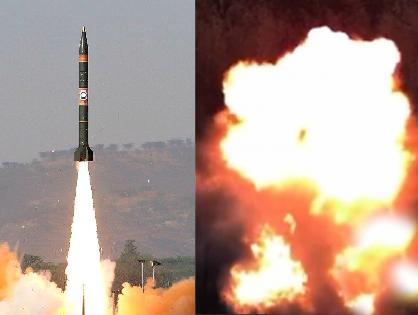|
Getting your Trinity Audio player ready...
|

- SEBEX 2 is one of the world’s most powerful non-nuclear explosives, capable of revolutionising munitions without reducing weight.
- India has been improving its nuclear capability while simultaneously innovating in other conventional explosive technologies.
- Enhancing the defense trade will benefit the Indian economy and strengthen strategic partnerships.
India has developed one of the most potent non-nuclear bombs, according to recent headlines, piquing curiosity around the world. This explosive is thought to be twice as potent as TNT, which represents a major advancement in India’s armed forces.
SEBEX 2 is one of the world’s most powerful non-nuclear explosives, capable of revolutionising munitions without reducing weight. Older non-nuclear explosives include conventional materials like gunpowder, fuels derived from petroleum that are volatile, like petrol, and other chemical processes.
A Landmark Achievement
India has accomplished a tremendous deal by creating this new explosive formula. Economic Explosives Ltd., a Nagpur-based subsidiary of Solar Industries, has created three new explosive compositions that, when combined with their increased explosive effect and firepower, have the potential to revolutionise the Indian armed forces as part of the “Make in India” campaign. This technology has been proven to be quite effective by the Indian Navy after a series of tests. With relation to non-nuclear military technologies, India now has a strategic advantage, thanks to this achievement. The significance of this breakthrough cannot be overstated; it demonstrates how India is advancing technologically and showcasing creativity in the defence sector.
The Formula and the Results
Earlier, India’s explosive arsenal depended on formulas that were merely 1.3 times more potent than TNT. The new formulation, on the other hand, is said to be twice as potent, which is a significant improvement. This improved explosive performance will be incorporated into different weapon systems such as bombs, artillery shells, and missiles, making them much deadlier. The creation of such a powerful explosive is expected to revolutionize Indian military tactics, with greater efficiency in terms of action in conflicts.
Global Context: The Conventional Arms Race
Internationally, there is more concentration on non-nuclear explosives. Some of the most powerful conventional weapons that do not rely on nuclear ordnance include the USA’s Massive Ordnance Air Blast (MOAB), also popularly known as the Mother of All Bombs, and Russia’s Father of All Bombs (FOAB), also known as Big Daddy. This new explosive puts India among the famous nations in this field. This achievement reflects India’s intention to maintain a strong and advanced defense system that will enable it to counter any aggression and protect its strategic interests in the international arena.
India’s Strategic Advantage
The manufacture of these new explosives in large quantities in India is a significant advantage. While China has claimed to have developed an explosive ten times more powerful than TNT but has not been able to scale up production, India wants to ensure that the new formulation it is proposing can indeed be produced en masse. This capability is essential in ensuring that defense capabilities are optimally prepared and ready to counter any threats. Consequently, the capacity to manufacture these explosives positions India to make credible and constant shipments of sophisticated weapons, which increases the armed forces’ preparedness and effectiveness.
Enhancing Nuclear Capabilities
India has been improving its nuclear capability while simultaneously innovating in other conventional explosive technologies. According to official sources, India has reportedly developed a stockpile of 172 nuclear weapons, surpassing Pakistan for the first time in the last 20 years. India has recently developed its most powerful nuclear warhead with a yield of 45 KT, which is much higher than the bombs dropped on Hiroshima and Nagasaki. However, these nuclear weapons are currently part of a strategy rather than being actively employed in battle. With this strategy, which seeks to improve both nuclear and conventional forces, India is in a position to deter a broad spectrum of threats.
Impact on the Defense Trade
India’s defence exports to foreign countries depend heavily on its advancements in non-nuclear explosive weaponry technology. Being a pioneer in this field, India is now able to supply its partners and allies with extremely potent, cutting-edge non-nuclear weapons. India’s position in the international arms market may be strengthened as a result, raising the value of its defence exports. Nations seeking to augment their military might without resorting to nuclear weapons may look to India for these cutting-edge technological alternatives. India is a trustworthy partner as well because of its ability to supply these explosives in huge quantities, particularly for long-term prospective defence contracts.
Overall, enhancing the defense trade will benefit the Indian economy and strengthen strategic partnerships. To further its geopolitical standing, India can provide sophisticated military equipment to its strategic partners. This development also creates opportunities for partnership and cooperation in terms of technology sharing and improvement.
Conclusion
India has made military progress by acquiring one of the most potent non-nuclear explosives in the world. This development strengthens India’s defence system and establishes India as a major player in the world defence arena. Modern warfare will be defined by India’s scientific breakthroughs and strategic vision in the midst of rising technical competitors and geopolitical crises. The fact that India plans to increase its defence trade demonstrates the significant benefits of these developments, which include financial advantages and global alliances.
